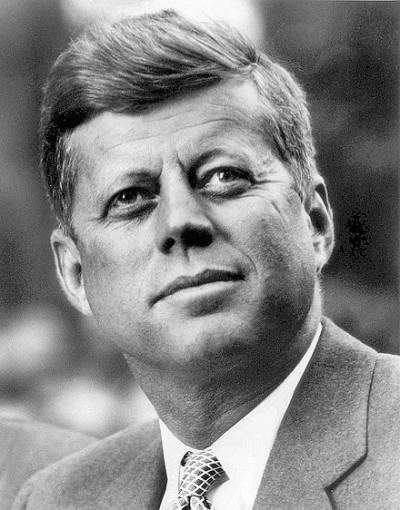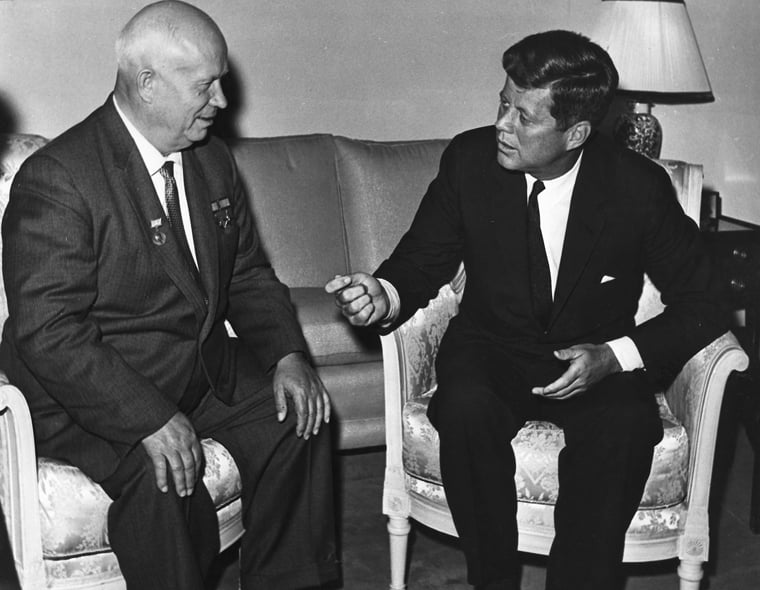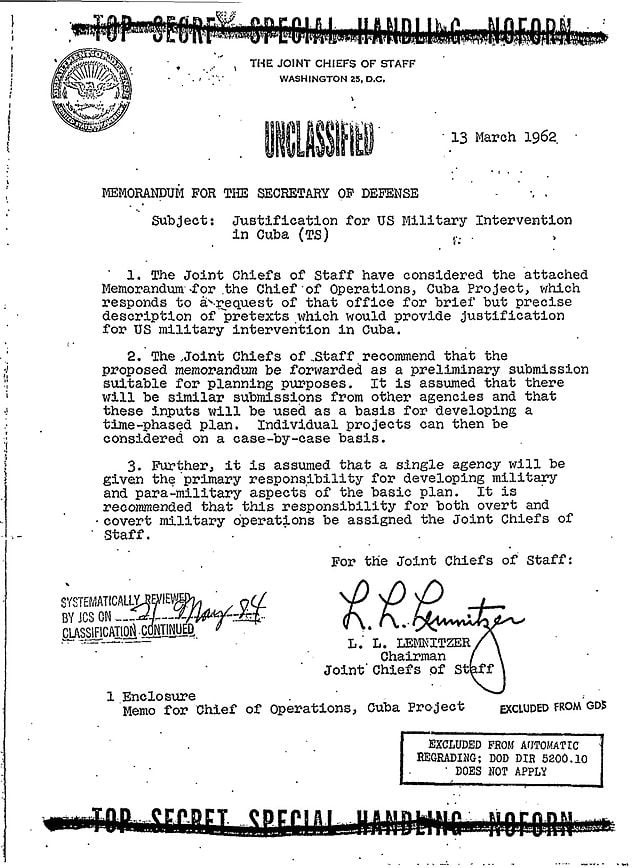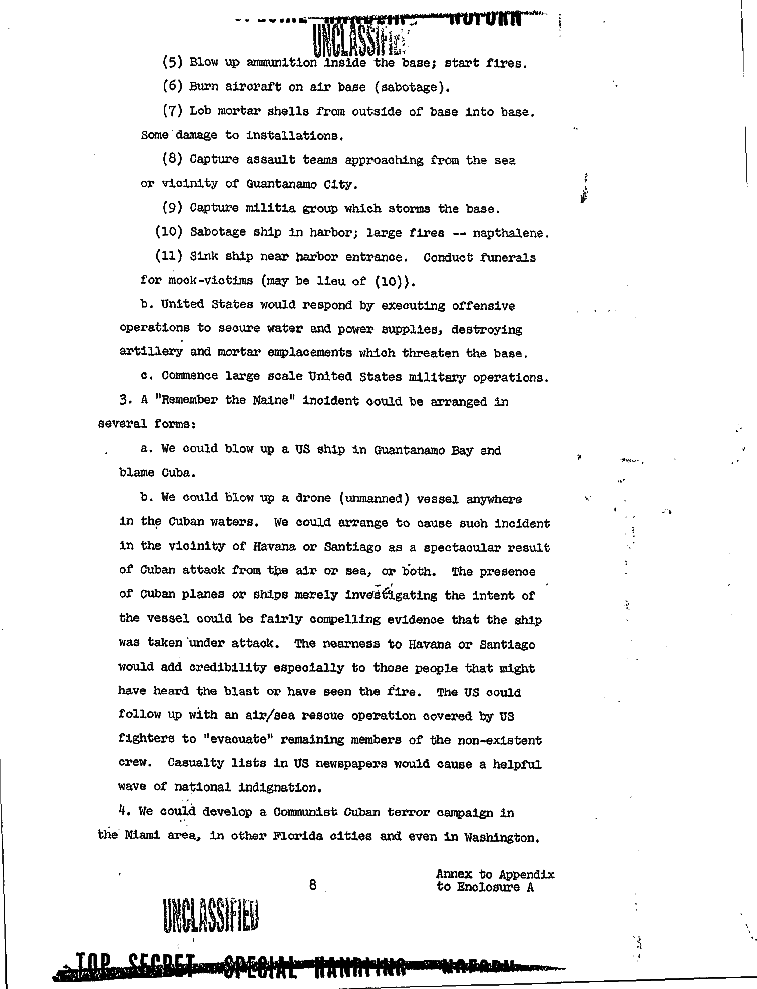John F. Kennedy “Turned to Peace”, Refused the Conduct of a “False Flag” and Was Assassinated
Rejected US Military's "Operation Northwoods" False Flag

First published on July 21, 2016.
On November 22, 2023 we will be commemorating the 60th anniversary of the Assassination of President John F. Kennedy.
His Legacy and Commitment to World Peace will Live Forever.
This important article by Dr. Paul Craig Roberts provides us with an understanding of the diabolical nature of “False Flag” Attacks, which had been envisaged in 1962 by the US Joint Chiefs of Staff as a means to justify the invasion of Cuba.
Dr. Roberts’ analysis sheds light on the False Flag Attack against the People of Palestine. The premises are very similar to those of Operation Northwoods.
Operation Northwoods was prepared by the Joint Chiefs of Staff with the support of US intelligence. The logic of this false flag plan was
“to kill innocent people and commit acts of terrorism in U.S. cities to create public support for a war against Cuba”.
“Casualty Lists Would Cause a Helpful Wave of Indignation”.
President John F. Kennedy
“rejected the Chairman of the Joint Chiefs of Staff Lemnitzer’s “Operation Northwoods,” a plan to carry out false flag terror attacks on Americans and blame Castro in order to create support for a US invasion of Cuba”.
That happened a year before his assassination in November 1963.
Michel Chossudovsky, November 20, 2023
***
Researchers who have investigated the assassination of President John F. Kennedy for 30 or more years have concluded that he was murdered by a conspiracy of the Joint Chiefs of Staff, the CIA, and the Secret Service.
See for example, JFK And The Unspeakable by James W. Douglass.
Shortly before he was murdered, President John F. Kennedy gave an extraordinary speech at American University.
In the speech he came out against continuation of the Cold War that risked all life on earth for the benefit of the profits of the military-security complex and the budgets and power of the Pentagon and CIA.
President Kennedy was already marked for assassination.
He rejected the Joint Chiefs’ belligerence toward the Soviet Union and their belief that nuclear war could be won.
He rejected the Chairman of the Joint Chiefs of Staff Lemnitzer’s “Operation Northwoods,” a plan to carry out false flag terror attacks on Americans and blame Castro in order to create support for a US invasion of Cuba.
He rejected US Air Force support for the CIA’s Bay of Pigs invasion of Cuba.

PX 96-33:12 03 June 1961 President Kennedy meets with Chairman Khrushchev at the U. S. Embassy residence, Vienna.
He worked outside of channels with Khrushchev to defuse the Cuban Missile Crisis.
The paranoid anti-communists who controlled US military and security forces concluded that President Kennedy did not serve their career interests and was soft on communism and thereby unable to stand up to the Soviet Union.
They viewed Kennedy as a threat to US national security that needed to be removed.
A new peace movement, NoWar2016 has utilized part of President Kennedy’s speech to build interest in its September 23-25 conference at American University.
David Swanson points out the difference between President Kennedy’s approach to the Soviet Union and Washington’s approach to Russia today.
There was hope in Kennedy’s approach. There is no hope in the approach today.
Listen to Kennedy’s speech and despair that such brilliant and fearless leadership was snuffed out by the military-security complex.
Like almost all Americans at the time, Senator John F. Kennedy regarded the Soviet Union as a threatening adversary.
He campaigned for the presidency on “the missile gap,” the presumption of which was that the Soviets were gaining military supremacy over the US.
But once in the Oval Office, Kennedy witnessed the extreme risks that US military leadership was willing to impose on American lives in behalf of a war than no one needed.
He realized that the US military-security complex was as great a threat to life as the Soviets. He understood that tensions between the two nuclear powers had to be defused, not increased.
Once reelected, he intended to cease the US intervention in Vietnam and to discipline the CIA. Kennedy’s approach was not acceptable to the military-security complex, and he was eliminated.
Dr. Paul Craig Roberts was Assistant Secretary of the Treasury for Economic Policy and associate editor of the Wall Street Journal. He was columnist for Business Week, Scripps Howard News Service, and Creators Syndicate. He has had many university appointments. His internet columns have attracted a worldwide following.
Roberts’ latest books are The Failure of Laissez Faire Capitalism and Economic Dissolution of the West, How America Was Lost, and The Neoconservative Threat to World Order.



